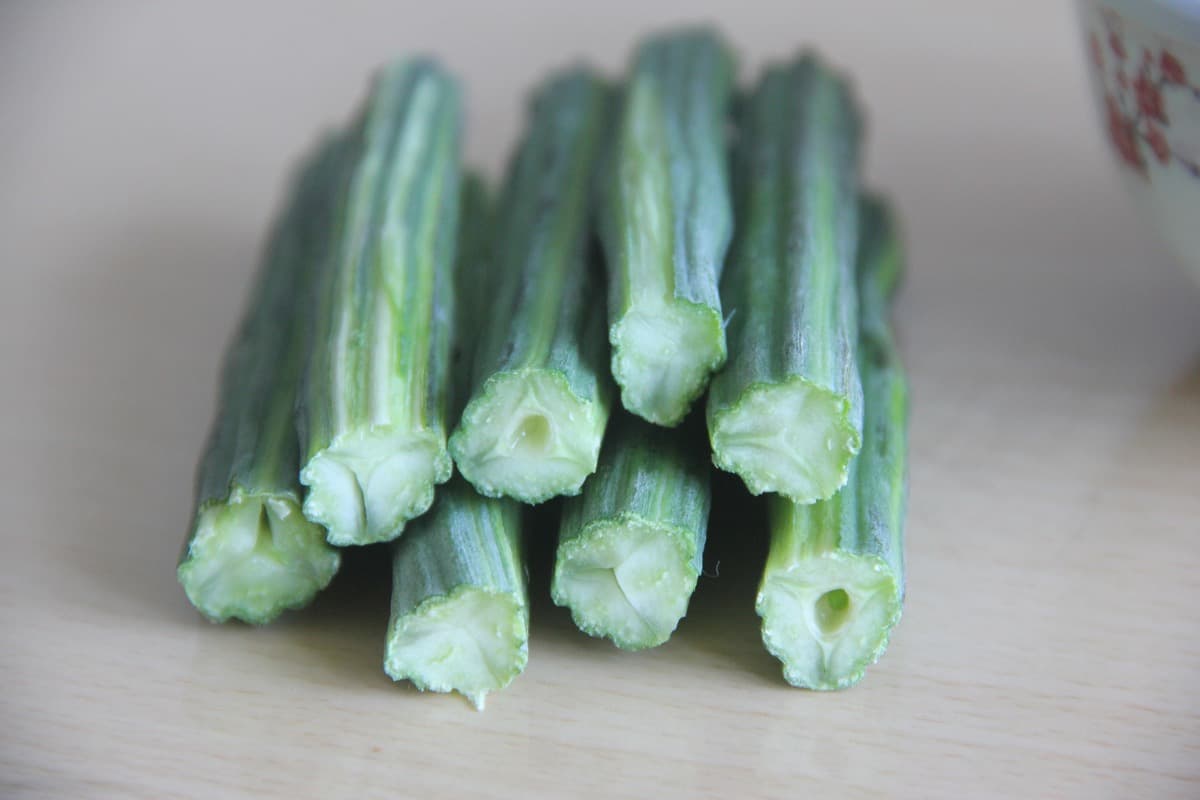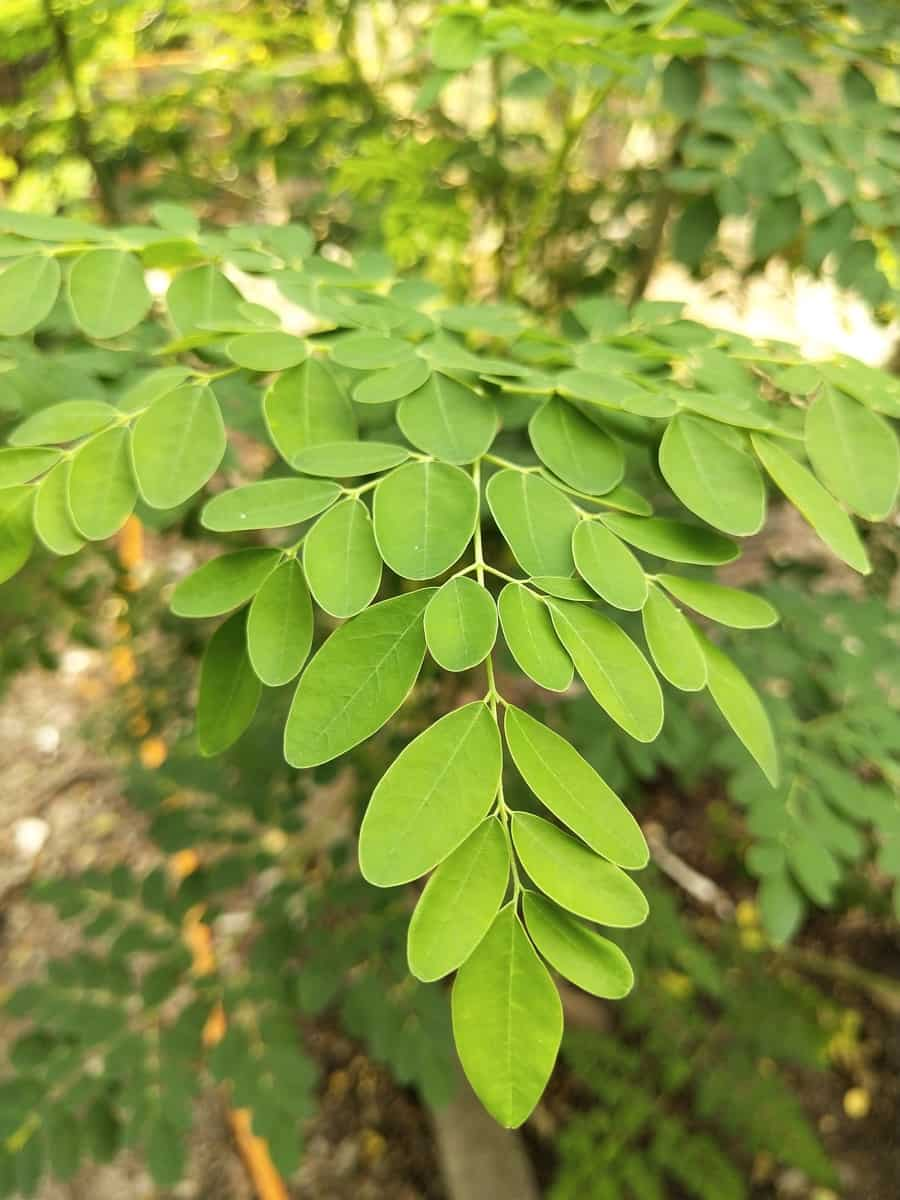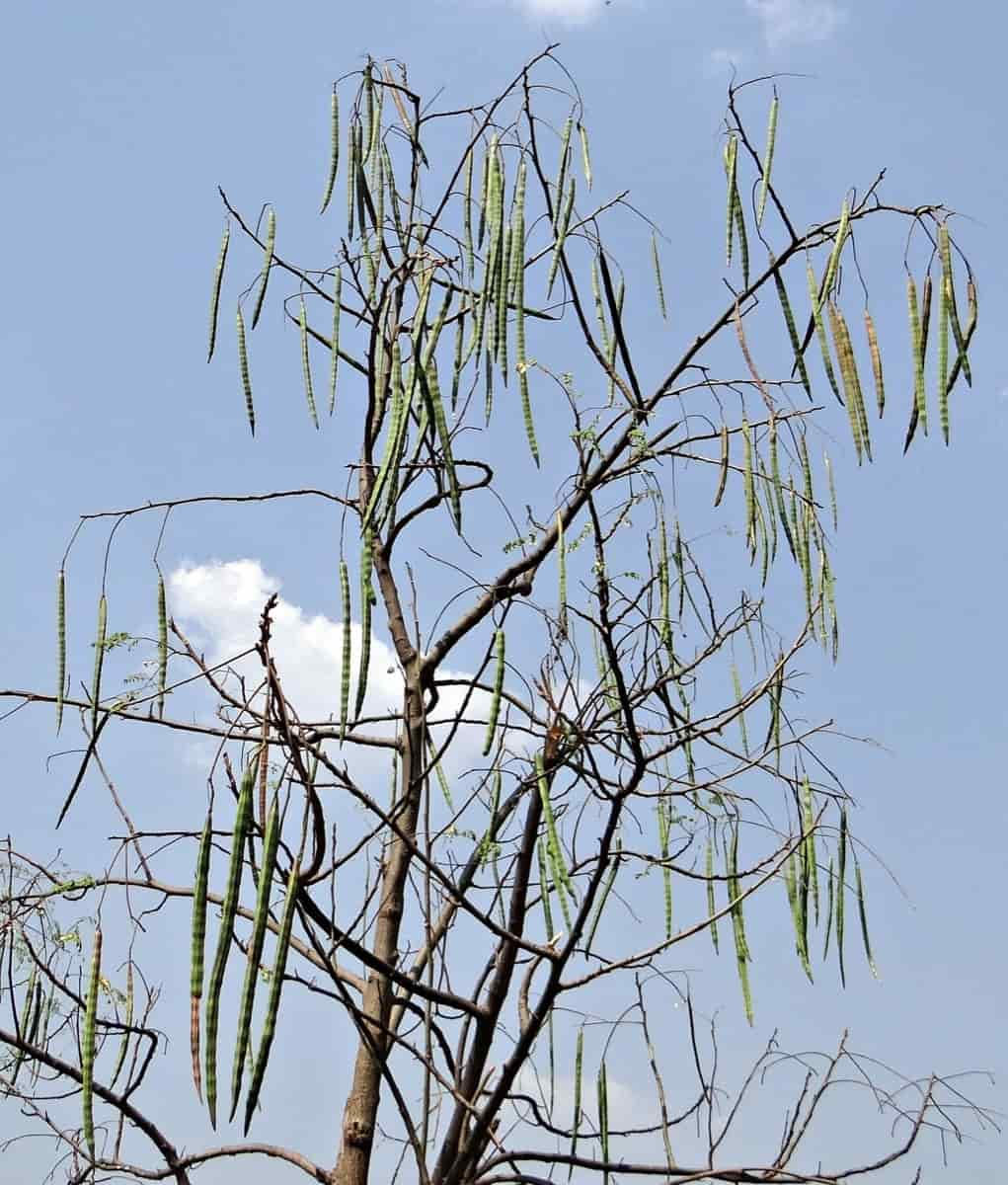A fast-growing tree native to the Himalayan foothills in northwest India, Moringa belongs to the Moringaceae family. Throughout the subcontinent, it is grown for its tender pods, leaves, and flowers. Also, moringa pods are popular vegetables in South Indian cuisine because of their distinctive flavor.
Besides being easy to cultivate, drumsticks are less time-consuming and pay well. Therefore, farmers can engage in such an endeavor if they are interested. Aside from being used for water purification and hand washing, it can also be used in herbal medicine. A Moringa tree has a lifespan of 30-40 years.

Growing Moringa organically in Tamilnadu
How does the Tamilnadu government support organic farming
The “Tamil Nadu Organic Farming Mission” is implemented by the Department of Horticulture on a cluster-based approach with two clusters in each district with a cluster size of 50 hectares. It is programmed to undertake promotional activities such as creating awareness of cultivation practices, giving soil health information, advice on bio-fertilizers, registering with the Organic Certification Department, etc. Also, cattle shed, and vermicompost unit will be set up in coordination with Rural Development.”
To facilitate easy access to quality seeds and provide advisory on Seed production and Organic Certification to farmers, Integrated Seed Certification Office Complex was established to accommodate Seed Certification, Seed Inspection, and Seed testing in Villupuram and Tiruppur districts. Besides, to ensure the quality of organic produce produced by farmers, 100 percent assistance for the cost of residue analysis of organic produce will be given.
Perennial ecotypes of Moringa cultivated in Tamil Nadu
Indian states such as Tamil Nadu, Karnataka, Kerala, and Andhra Pradesh widely cultivate Moringa. Plants of the perennial type, however, have been cultivated for hundreds of years. Important varieties of moringa are Moolanur moringa, Kodikkalmurungai, Valayapatti moringa, Chavakacheri Moringa, chemmurungai, Jaffna type, Kattumurungai, Palmurungai, Punamurungai, Palamedu moringa.
Jaffna type
This moringa variety is introduced from Sri Lanka. Its fruits are 60-90 cm long with soft flesh and good taste. This type yields around 40 pods from the second year of planting, increasing to 600 pods/tree from the third year onwards. It is cultivated commercially in the Tirunelveli and Tuticorin districts of Tamil Nadu, Kerala, and Karnataka.
Moolanur moringa
Farmers in and around the Moolanur, Karur, and Dharapuram areas of Tamilnadu predominantly cultivate perennial Moringa with a pod length of 45-50 cm, pod weight of 120 g, and a yield of 200 kg/tree. Trees are maintained for up to 15 years without pruning.
In case you missed it: Best Fertilizer for Moringa Plant: Organic, Compost Manure, NPK, and Schedule
Valayapatti moringa
Another perennial type cultivated in and around Usilampatti, Andipatti areas is Valayapatti moringa. The pods are around 65 cm long and weigh about 120 g. Yield is reported to be 1000-1200 pods/tree.
Chavakacheri moringa
An ecotype of Jaffna moringa bears pods as long as 90-120 cm. It is also cultivated in Tamil Nadu. Due to the long size of pods, this Moringa is highly damaged during transportation. It yields 500-600 pods/tree/year.
Chemmurungai
It is another ecotype of Jaffna murungai, and it flowers and fruits throughout the year, yielding a heavy crop. The tips of the pods are red. The tree is medium-sized and bears long pods.
Kodikkal murungai
It is cultivated predominantly in the betel vine gardens of the Tiruchirapalli district of Tamil Nadu. The pods are shorter (20-25 cm long), thick, and fleshed. The pods and leaves are very tasty. Trees are short-statured with smaller leaves.
Palamedu Moringa
The pods are 60 cm long, with a pod weight of 95-100 g and a yield of 100 pods/tree
PKM 1
It is a pure line selection developed by continuous selfing for six generations, collected from Eppothumvendran of Tirunelveli region. Though the flowers are in clusters of 25-150/cluster, only one pod usually develops, and rarely 2-4 develop per cluster. The pods are 75 cm long with a circumference of 6.3 cm and weigh 150 g with 70% flesh. The average yield is 220 fruits/tree. The estimated yield is around 20 t/acre. The pods attain edible maturity 65 days after flowering.
PKM 2
It is a hybrid derivative of a cross between MP 31 (Eppothum vendran local) and MP 28 (Arasaradi local). It can be propagated through seeds. The pods are 126 cm long, with a circumference of 8.3 cm and individual fruit weight of 280 g with 70% flesh. The average number of pods per tree is 220/tree/year. Ratoon crops can also be taken up for three years. It is suitable for growing in Tamil Nadu and is adapted to most soil types.
Soil requirement for growing Moringa organically
Moringa grows best in sandy loam soil. The best soil type for cultivating Moringa is red. Even slightly saline soil is suitable for Moringa, and it can survive and thrive there. However, soil that contains too much clay or is too sandy is not suitable for the commercial cultivation of Moringa. Plants will grow slowly in clay soil because root penetration is slower, and water stagnation is a problem. By adding organic matter to clay soil before planting, clay soil can be remedied. Compost and cow manure can help loosen the soil, especially near the roots.
Land preparation for growing Moringa organically
Sand loams to clay loams with good drainage are used for land preparation. A combination of neem cake and FYM is used during the land preparation. Moringa cultivation requires deep plowing. During the summer months, pits measuring 1 ft by 1 ft by 1 ft are prepared at a distance of 2.5 m.
In case you missed it: Pest and Disease Management in Moringa: Causes, Symptoms, Chemical, and Biological Control

The pits are filled with FYM and soil in 2 kg each. In the pits, the seedlings are planted at the onset of the monsoon. An acre of land requires about 600 plants. It is also possible to plant seeds prepared by vegetative propagation in the pits after filling them with manure. Moringa can be planted on the banks of ponds and wastelands.
Raising Seedlings and transplanting for growing Moringa organically
Raising seedlings is easy. Seeds and branches can both be used for propagation. An approximately 15 cm x 7 cm polythene bag is ideal. May – June are the best months. May – June is when soil and organic manure must be packed in poly bags in a 2:1 ratio. Each packet should contain two seeds, be kept under shade, and be watered regularly. After 8-10 days, germination occurs. On the mainland, seedlings are ready to be planted after 30-35 days. The amount of seeds needed per acre is about 350 grams.
Irrigation and fertigation for growing Moringa organically
Moringa trees require different types of irrigation. There is a greater need for irrigation for plant varieties than for tree varieties. The yield of hybrid trees is also improved by timely irrigation. Drought and harsh summers are not a problem for them. Winters are not well tolerated. While moringa crops can handle harsh summers and short periods of drought, you should irrigate them frequently during summer. A healthy and all-around crop is essential for a commercial moringa farm throughout the life of your moringa trees.
Moringa tree requires a lack of soil moisture for up to 20-30 days to bloom well. However, watering every 7-10 days should ensure a small amount of moisture. Excess irrigation can affect production. Moringa blooms during the month of February-March. So, it is ideal to stop watering during this period. Regular irrigation and excess moisture will stop the plant from blooming.
Required fertilizers for Moringa farming
The Moringa plant is generally very low maintenance. Around the tree during monsoon, dig a circle-shaped pit and fill it with leaves, ash, and organic fertilizers. As a result, production will increase. Chicken manure is given up to 10 kilograms per tree in Tamil Nadu. Combine dry cow dung powder with neem cake, Rajphos, and ash in a 10-kilogram batch.
Put this mixture at the bottom of every tree. When the tree reaches 2 feet, prune it every 25 days to improve production. Before planting any tree, a soil test should always be conducted. You will need to adjust the nutrition levels of your Moringa plants based on the soil nutrients.
Training and pruning
Moringa trees can benefit greatly from pruning. In addition to increasing stems, pruning reduces the tree’s overall height and keeps it in good shape. It is recommended to prune the plant when it reaches a height of approximately three feet. From then on, stems should be pruned every three months until they flower. Once the plant starts flowering, do not prune it. However, hard pruning before the monsoon will be beneficial.
In case you missed it: Organic Moringa Farming (Drumstick) – Production In India
Major pests in Moringa and their organic control
Hairy caterpillar
Damage symptoms
- The larva is seen in groups in tree trunks
- Feed gregariously
- Scraping the bark and gnawing foliage
- Severe infestation leads to defoliation of the tree
Control and management
- Collect and destroy egg masses and caterpillars
- Set up the light trap at 1 / acre to attract and kill adults immediately after rain
- Use the burning torch to kill congregating larvae on the trunk
- The organic way to control this infestation is by spraying a mixture of neem and datura extract with water.
Pod fly
Damage symptoms
- Drying and splitting of fruits from the tip.
- The adult pod fly is a small yellowing fly with red eyes.
- It tends to lay its legs in clusters on the grooves of tender fruit pods.
- Once the larvae emerge from the egg, it travels inside the tender fruits by boring small holes into them.
Control and management
- Collect and destroy all the fallen and damaged fruits
- Use attractants like citronella oil, eucalyptus oil, vinegar (Acetic acid), dextrose, or lactic acid
- Rake up the soil under the trees or plow the infested field to destroy the puparium
- Collect and destroy all of the damaged and fallen fruits.
- Spray diluted citronella oil, vinegar, or eucalyptus oil with water to repel the flies.
- Spray organic insecticides to repel the flies.
In case you missed it: Moringa Pests, Diseases, and Control Methods (Drumstick)
Moringa budworm
Damage symptoms
- In the early stages, the caterpillars give it a papery white appearance.
- Later they become voracious feeders making irregular holes in the leaves.
- Irregular holes on leaves initially and later skeletonization leaving only veins and petioles
- Heavy defoliation and bored fruits with irregular holes
- Larvae bore into flower buds feeding on the inner contents, causing shedding up to 78 percent during summer.
Control and management
- You can attract its natural predators, such as wasps, minute pirate bugs, big-eyed bugs, and damsel bugs.
- As biological control methods, you can also use parasitoids such as Trichogramma pretiosum and cardiochiles nigriceps.
Diseases in Moringa and their organic control
Damping-off
Disease symptoms
- Pre-emergence damping off: Poor seed germination occurs when seedlings disintegrate before emerging from the soil
- Post-emergence damping off: Disease develops after seedlings emerge from the soil but before lignification occurs in the stems
- The collar region has been affected by water-soaked lesions
- Rotting and browning of infected areas
- Softening of tissues causes plants to wilt and collapse
Control
- Plant seedlings, so the soil surface is near the top of the container to ensure proper ventilation and air circulation.
- Sow seeds thinly to prevent overcrowding which can lead to humid, moist conditions.
- Seedling trays that provide water from below are preferable to overhead watering.
Twig canker
Disease symptoms
- Leaf chlorosis and clearing of the veinlets are the first symptoms of the disease.
- The younger leaves may die one after another, and the entire plant may wilt and die in a few days.
- The petiole and leaves will soon droop and wilt.
- In subsequent leaves, the symptoms persist.
- In a later stage, the vascular system browns.
- Plants become stunted and die as a result.
In case you missed it: Moringa Seed Germination Procedure, Spacing, Yield

Control
- You can control the spread of the disease by pruning out the infected area. In late winter or early spring, remove infected branches at least 4 inches (10 cm.) below the canker where the tree is weeping amber color sap.
- Disinfect pruners between cuts with a disinfectant spray or ten percent bleach solution. If you use bleach on your pruners, wash, rinse, and dry them before putting them away to prevent corrosion.
Harvesting
After six months of ‘planting and harvesting, it can be done. On average, 200 fruits could be obtained. After harvesting, the pruning of plants is done to get more branches and fruits in the next season. From the vegetative propagation, tall plants are obtained. Therefore, after harvesting, branches have to be axed. Initially, about 90 fruits per plant are obtained, but with time, about 800 – 1000 Moringa fruits are obtained / per plant.
Yield per acre and yield per plant / Tree in organic Moring farming
Regarding acreage, the moringa yield could be between 30000 to 35,000 kg per acre. An average yield of 30-35 kg per year is easily attainable with any variety of Moringa. ODC3 Promises up to 30 kg Yield twice a year, with PKM1 and PKM 2 yielding around 50 kg per plant in a year.
Conclusion
The cultivation of Moringa is typically easy and profitable. Moringa cultivation is becoming increasingly popular due to its low water requirements and maintenance costs. The moringa plant produces fruits, flowers, leaves, and roots, making it a complete package.
- Types of Pesticides Used in Agriculture: A Beginner’s Guide
- Economical Aquaculture: A Guide to Low-Budget Fish Farming
- 15 Common Planting Errors That Can Doom Your Fruit Trees
- How to Make Houseplants Bushy: Effective Tips and Ideas
- Innovative Strategies for Boosting Coconut Pollination and Yield
- Pollination Strategies for Maximum Pumpkin Yield
- The Complete Guide to Chicken Fattening: Strategies for Maximum Growth
- Natural Solutions for Tulip Problems: 100% Effective Remedies for Leaf and Bulb-Related Issues
- Revolutionizing Citrus Preservation: Towards a Healthier, Greener Future
- Natural Solutions for Peony Leaf and Flower Problems: 100% Effective Remedies
- Maximizing Profits with Avocado Contract Farming in India: A Comprehensive Guide
- Natural Solutions for Hydrangea Problems: 100% Effective Remedies for Leaf and Flowers
- The Ultimate Guide to Choosing the Perfect Foliage Friend: Bringing Life Indoors
- From Sunlight to Sustainability: 15 Ways to Use Solar Technology in Agriculture
- The Ultimate Guide to Dong Tao Chicken: Exploring from History to Raising
- The Eco-Friendly Makeover: How to Convert Your Unused Swimming Pool into a Fish Pond
- Mastering the Art of Delaware Chicken Farming: Essentials for Healthy Backyard Flocks
- 20 Best Homemade Fertilizers for Money Plant: DIY Recipes and Application Methods
- How to Craft a Comprehensive Free-Range Chicken Farming Business Plan
- Brighten Your Flock: Raising Easter Egger Chickens for Beauty and Bounty
- How to Optimize Your Poultry Egg Farm Business Plan with These Strategies
- Subsidy for Spirulina Cultivation: How Indian Government Schemes Encouraging Spirulina Farmers
- Ultimate Guide to Raising Dominique Chickens: Breeding, Feeding, Egg-Production, and Care
- Mastering the Art of Raising Jersey Giant Chickens: Care, Feeding, and More
- Ultimate Guide to Raising Legbar Chickens: Breeding, Farming Practices, Diet, Egg-Production
- How to Raise Welsummer Chickens: A Comprehensive Guide for Beginners
- How to Protect Indoor Plants in Winter: A Comprehensive Guide
- Ultimate Guide to Grow Bag Gardening: Tips, Tricks, and Planting Ideas for Urban Gardeners
- Guide to Lotus Cultivation: How to Propagate, Plant, Grow, Care, Cost, and Profit
- Agriculture Drone Subsidy Scheme: Government Kisan Subsidy, License, and How to Apply Online
- Ultimate Guide to Raising Araucana Chickens: Breed Profile, Farming Economics, Diet, and Care
- Bringing Hydroponics to Classroom: Importance, Benefits of Learning for School Students
- Ultimate Guide to Raising Polish Chickens: Breed Profile, Farming Economics, Diet, and Care
- Ultimate Guide to Raising Australorp Chickens: Profile, Farming Economics, Egg Production, Diet, and Care
- Silkie Chicken Farming: Raising Practices, Varieties, Egg Production, Diet, and Care
- Sussex Chicken Farming: Raising Practices, Varieties, Egg Production, Diet and Care


